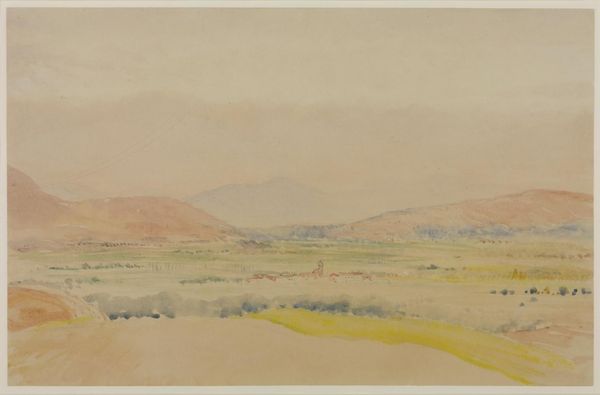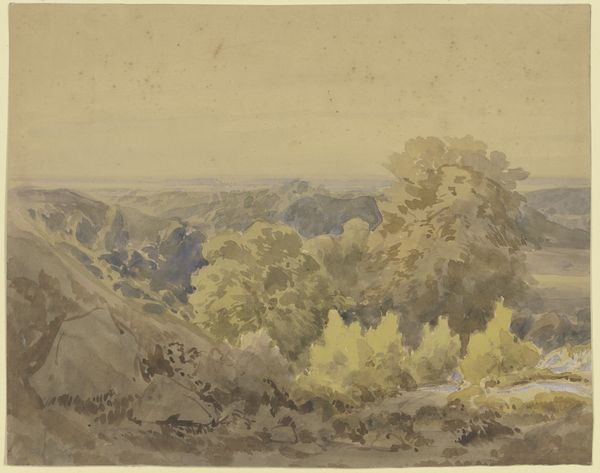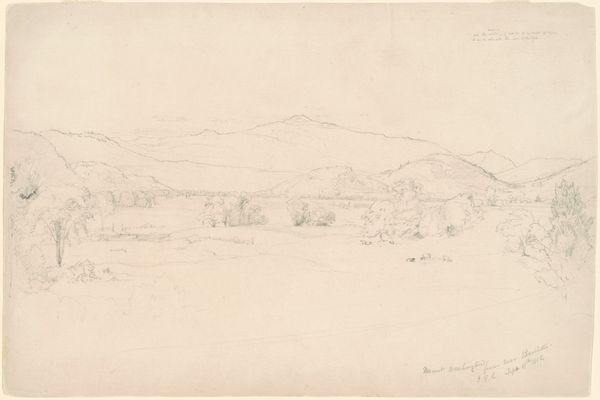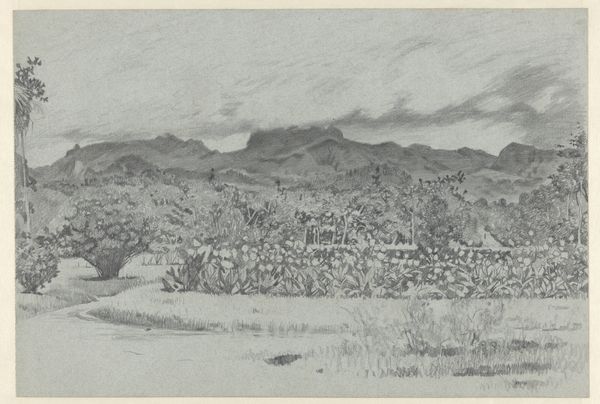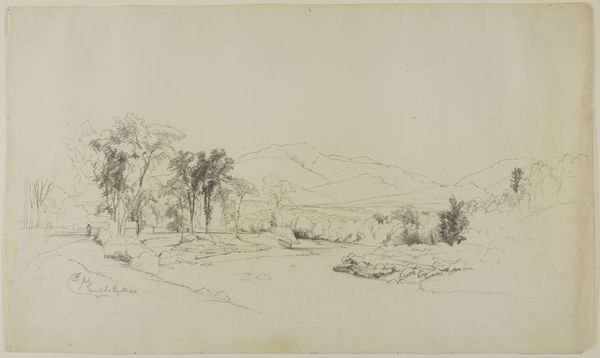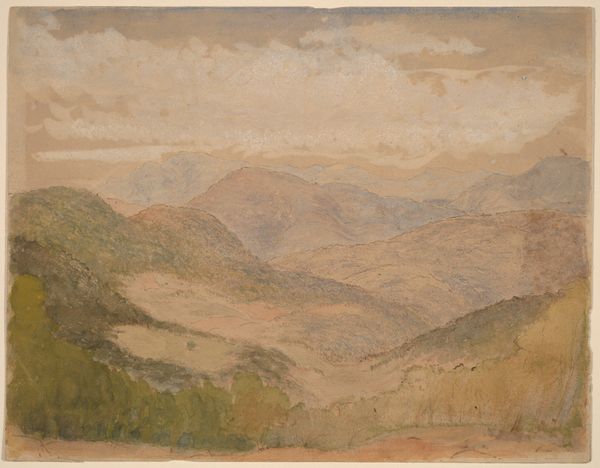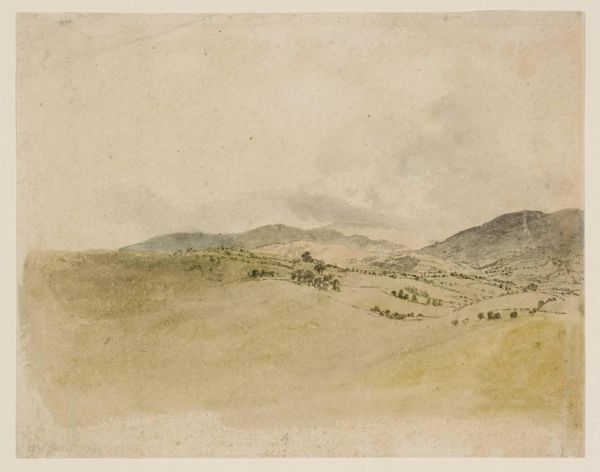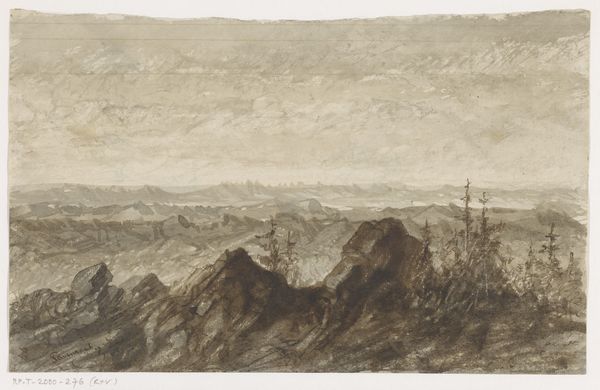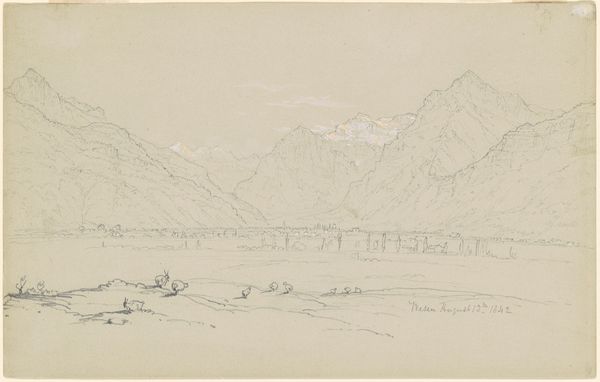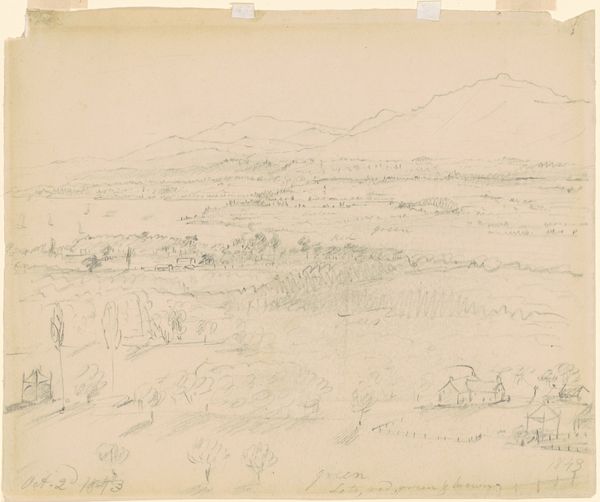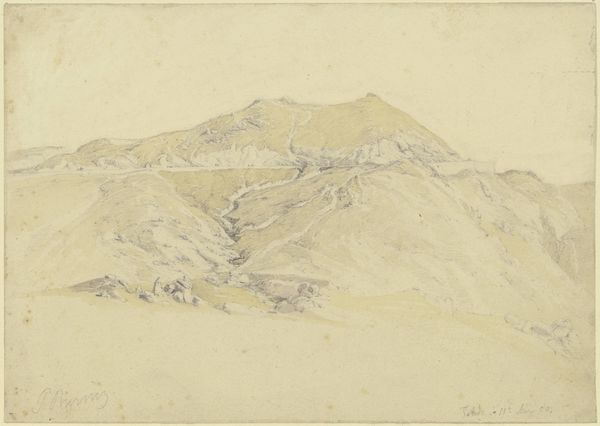
drawing, paper, watercolor
#
drawing
#
landscape
#
paper
#
watercolor
#
romanticism
#
watercolor
Copyright: Public Domain
Editor: This is "Berglandschaft in Oberitalien" or "Mountainous Landscape in Upper Italy" by Johann Nepomuk Rauch, made around 1829 to 1831, using watercolor on paper. It feels so light and airy, almost unfinished. What compositional elements stand out to you? Curator: I am struck by the artist’s use of atmospheric perspective. Note how the tonal gradations create a sense of depth, receding into the distance. The application of watercolor, in washes, is critical in achieving this. Do you observe how the forms simplify and blur as they approach the horizon line? Editor: Yes, the mountains in the background are much paler and less defined. Is that typical for landscape paintings of this period? Curator: The artist's commitment to portraying depth is very revealing here, the formal elements point us towards its significance. The layers of hills are more than literal: consider their geometric structure, in terms of receding planes. Can you see how Rauch divides the image into horizontal bands, emphasizing recession? This is further accentuated by the strategic placement of dark and light tones. Editor: It's subtle, but now that you mention it, I see how the lighter areas lead my eye further back. Curator: Indeed. Even the perceived incompleteness enhances this. Consider the materiality of the paper, visible beneath the washes. Is it background, or a visual statement? Editor: I hadn’t thought about the exposed paper before, but now it adds another layer. Thank you for pointing that out! Curator: My pleasure! Examining its form and method shows just how compelling even an apparently simple work on paper can be.
Comments
No comments
Be the first to comment and join the conversation on the ultimate creative platform.
